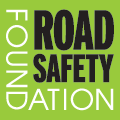The Big Fix
For over 75 years, road researchers have shown that some detailed road layouts are many times safer than others in preventing high-energy crashes from happening. Cheap and simple measures like crash barriers can prevent fatal consequences when crashes do occur.
New roads are normally built to recent safety standards. Even simple single carriageway roads built in the last quarter century can be expected to be at least twice as safe as the rest of the network. But most of the road network is not new, rather it has been inherited from previous generations and has evolved but not been designed. ‘Mass Action Safety Programmes’ upgrade the safety detail repeatedly across a network or along a route to:
- Provide extra recovery space at the side of a road using a paved shoulder, and using shoulder rumble strips
- Use wide centrelines or central hatching to separate vehicles moving in opposite directions
- Provide ‘sheltered’ turning lanes
- Remove obstacles close to the carriageway, replace them (with frangible alternatives) or protect them with crash barriers
- Install high skid-resistant surfacing and high-visibility markings on bends
- Replace old T-junctions and crossroads on major routes with well-designed roundabouts
- Put high visibility markings on minor accesses to high speed roads
- Improve road alignments to reduce excessive speeds through villages
- Replace surface level (at-grade) junctions on high-speed dual carriageways
These more forgiving designs have much lower risk of death and serious injury. The result is more readable roads that reduce human error and cushion crash impacts.
The scale of the opportunity from mass action is difficult to comprehend. Every decade, there are around 500 million road crashes in Europe. Most crashes are minor bumps that might give a momentary shock. But people will be hurt in 50 million crashes, and in 5 million life changing, disabling injuries, or death, will occur. Engineering measures can be long lasting – 10, 20, or even 100 years can pass before another change is made.
Fortunately – in the sense that lives can be saved quickly and affordably – many crashes are concentrated on old main routes that are not laid out to modern safety standards with modern safety equipment. The cost of upgrading the safety of routes in a Mass Action Safety Programme is far lower than piecemeal change.
Benefit to cost ratios of 3:1 or more can easily be achieved, meaning that for every £1 spent on these types of treatment, £3 or more is returned to the economy in crash savings.
For example, crash barriers can be 10 times cheaper to put in place in large scale along a route instead of a token local improvement at the site of the most recent tragedy. The impact that a “big fix” can have is not well understood by policy makers, the public, or even road engineers. Over the coming decade, Mass Action has the potential to slash European road casualties, but only if done systematically – giving priority to high-risk routes on which people are being killed and seriously hurt in large numbers.
